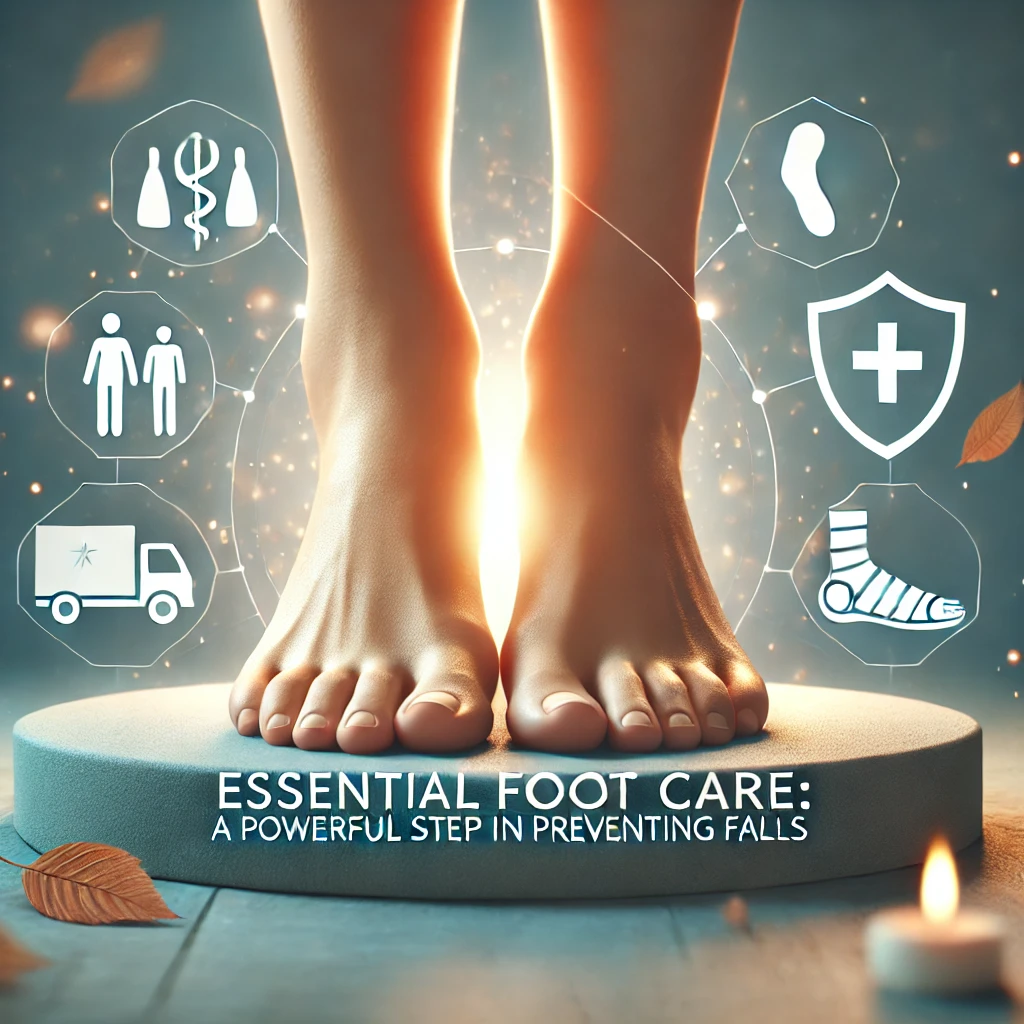Unlock the mystery of pediatric flatfoot with our expert guide. Dive into causes, symptoms, and transformative solutions to support your child’s foot health. Empower their steps towards a pain-free, active lifestyle today.

Introduction
Pediatric flatfoot, characterized by a missing arch in a child’s foot while standing, often sparks concern among parents. Though typically painless and part of normal growth, understanding its implications and supportive care is crucial. This condition manifests mainly as flexible flatfoot, where the arch appears when not bearing weight, and less commonly as rigid flatfoot, which may cause discomfort. Grasping the nuances of pediatric flatfoot is the first step towards ensuring your child’s optimal foot health and development.
Table of Contents
What is Pediatric Flatfoot?
Flatfoot in children can present in two main forms: flexible flatfoot and rigid flatfoot. Flexible flatfoot, the more common type, means the child’s foot has an arch when not bearing weight, but it flattens upon standing. Rigid flatfoot, less common and potentially more concerning, involves a consistently flat arch, regardless of weight-bearing, and may be associated with pain or discomfort.

Causes of Pediatric Flatfoot
1. Genetic Factors
A significant cause of pediatric flatfoot is hereditary predisposition. If one or both parents have flat feet, their children are more likely to inherit the condition. This genetic link suggests that the structural characteristics of the foot, such as bone structure, ligament laxity, and muscle tone, can be passed down through generations.
2. Developmental Factors
During infancy and early childhood, it’s common for children to have a fat pad in the arch area of the foot, giving the appearance of flatfoot. As children grow and develop, this fat pad diminishes, and the arch becomes more visible. In some cases, the arch does not develop as expected, leading to pediatric flatfoot.
3. Ligament Laxity
Some children have more flexible ligaments, which can cause the foot to flatten under the body’s weight when standing. This ligament laxity can contribute to the development of flexible flatfoot, where the arch is visible when the child is sitting or on tiptoes but disappears when standing.
4. Obesity
Increased body weight can put additional pressure on the feet, potentially leading to or exacerbating flatfoot. The excess weight can strain the foot’s arch, causing it to flatten more than it would under normal conditions.
5. Neurological or Muscular Conditions
Certain conditions that affect muscle tone and neurological control, such as cerebral palsy, muscular dystrophy, or spina bifida, can lead to the development of flatfoot. These conditions can alter the way muscles support the foot’s arch, contributing to its flattening.
6. Tarsal Coalition
This condition involves an abnormal connection between two or more bones in the back of the foot (the tarsal bones). Tarsal coalition can limit the movement of the affected joints, leading to rigid flatfoot, where the arch is consistently flat regardless of whether the child is standing or not.
7. Injury or Trauma
Injuries to the foot, such as fractures or severe sprains, can damage the foot’s structure and potentially lead to the development of flatfoot. Trauma can affect the bones, ligaments, and tendons that support the arch, altering its shape and function.
Symptoms of Pediatric flatfoot
Pediatric flatfoot often goes unnoticed due to its typically painless nature in children. However, certain symptoms can indicate the condition might require attention:
| Visible Flatness of the Arch: When standing, the arch of the foot appears flattened or entirely absent, which is the most direct sign of pediatric flatfoot. |
| Changes in Walking Pattern: A child with flatfoot may develop an altered gait, such as walking on the toes or with a noticeable limp, to avoid discomfort. |
| Pain or Discomfort: While not always present, some children may experience pain in the foot, ankle, or lower leg, especially after physical activities. |
| Difficulty with Shoes: Children with flatfoot might find it hard to fit into shoes comfortably due to the shape of their feet, leading to complaints about shoe wear. |
| Reluctance to Participate in Physical Activities: Due to discomfort or lack of stability from flat feet, a child may avoid running, jumping, or engaging in sports. |
| Tiring Easily: Children with flatfoot may fatigue quicker than their peers during activities due to the extra strain on their feet and legs. |
| Swelling: The inside bottom of the foot may swell, particularly after prolonged periods of standing or physical activity. |
| Stiffness: The child may experience stiffness in the foot, particularly in the morning or after periods of rest, making the first steps uncomfortable. |
| Withdrawal from Physical Activities: A noticeable decrease in interest or participation in physical activities that were previously enjoyed can be a sign, especially if the child mentions foot discomfort as a reason. |
| Arch Pain During Activity: While the child may not complain of constant pain, they might report discomfort in the arch area during or after engaging in sports or even moderate physical activity. |
| Cramping: Some children with flatfoot experience cramping in the feet or legs, which can be a sign of strain due to the lack of proper arch support. |
| Toe Walking: A child might walk on their toes rather than using the full foot, possibly as a way to reduce discomfort associated with flatfoot. |
| Calluses or Blisters: Abnormal walking patterns due to flatfoot can lead to the development of calluses or blisters in unusual areas on the foot, indicating areas of high pressure or friction. |
| Overpronation: This refers to the excessive inward roll of the foot after landing while walking or running. It can often be observed in children with flatfoot and may contribute to uneven shoe wear. |
| Lower Back Pain: In some cases, the altered biomechanics from flatfoot can lead to discomfort extending up to the lower back, as the body compensates for the imbalance in the feet. |
| Ankle Swelling: Besides swelling in the foot, some children might also show signs of swelling around the ankles, which can be exacerbated by physical activity or prolonged standing. |
Recognizing these symptoms early can help in seeking appropriate advice and treatment to ensure the child’s comfort and healthy foot development.

When to Seek Professional Advice
Consulting a healthcare provider is advisable if your child experiences pain, if there’s a visible absence of foot arches by the age of five, or if there’s a significant change in their walking pattern. A professional assessment can help determine the condition’s nature and the best course of action.
Solutions and Management Strategies
For most children with flexible flatfoot, treatment may not be necessary, especially if there’s no pain. However, for those experiencing discomfort or for cases of rigid flatfoot, several management strategies can offer relief and support.
Managing pediatric flatfoot involves a combination of approaches aimed at alleviating symptoms, improving foot function, and supporting healthy development. Here are several effective solutions and management strategies:
1. Observation and Monitoring
In many cases, especially if the flatfoot is flexible and not causing pain, the first approach is simply to monitor the condition over time. Many children outgrow flatfoot as their bodies develop.
2. Supportive Footwear
Choosing shoes with good arch support and a firm heel counter can help stabilize the foot. Shoes should be appropriately sized, offering enough room for the toes to move freely without being too loose.

3. Orthotic Devices
Custom or over-the-counter orthotic inserts can provide additional support for the arch and distribute pressure more evenly across the foot. Orthotics can also help correct abnormal walking patterns associated with flatfoot.

4. Stretching and Physical Therapy
Exercises aimed at strengthening the foot, ankle, and lower leg muscles can improve foot mechanics and alleviate symptoms. A physical therapist can design a program tailored to the child’s needs, which may include stretches to increase flexibility in tight Achilles tendons or other areas.
5. Weight Management
For children who are overweight, achieving a healthier weight can reduce the pressure on the feet and alleviate symptoms of flatfoot.
6. Activity Modification
Encouraging low-impact activities, such as swimming or cycling, can keep children active while minimizing stress on the feet. It may also be necessary to limit activities that exacerbate pain or discomfort.

7. Pain Management
For occasional pain associated with pediatric flatfoot, over-the-counter pain relievers like acetaminophen or ibuprofen can be used, following dosage guidelines for children.
8. Surgical Intervention
Surgery is rarely needed for pediatric flatfoot but may be considered in severe cases, particularly if the condition is rigid, causing significant pain, or affecting the child’s ability to walk or participate in normal activities. Surgical options can vary and are typically pursued only after conservative measures have failed to provide relief.
9. Regular Check-ups
Regular visits to a pediatrician or a pediatric orthopedic specialist can help monitor the condition’s progression and adjust treatment plans as needed. Early intervention can prevent complications and ensure optimal foot development.
By adopting a comprehensive approach to management, most children with pediatric flatfoot can lead active, pain-free lives. It’s important for parents and caregivers to work closely with healthcare providers to determine the most appropriate strategies for their child’s specific situation.

Encouraging Healthy Foot Development
Promoting overall foot health is crucial, regardless of whether your child has flatfoot. Encourage regular physical activity, ensure they wear well-fitted shoes, and maintain a healthy weight to support their developing feet.
FAQ Section
Q: What causes pediatric flatfoot?
A: Causes range from genetic predisposition and developmental factors to obesity and specific medical conditions, affecting how the foot’s arch develops or functions.
Q: How can I tell if my child has pediatric flatfoot?
A: Look for signs like a visible flattening of the arch when standing, changes in walking patterns, discomfort, or difficulty fitting shoes.
Q: When should I seek professional advice?
A: Consult a healthcare provider if your child experiences pain, lacks foot arches by age five, or shows significant changes in their walking pattern.
Q: What are the solutions for managing pediatric flatfoot?
A: Management strategies include observation, supportive footwear, orthotic devices, physical therapy, weight management, activity modification, and, rarely, surgical intervention.
Conclusion
Pediatric flatfoot often raises concerns, but understanding its nature and available solutions can alleviate worries. Most children with this condition lead active, pain-free lives without the need for intervention. By staying informed and consulting healthcare professionals when necessary, parents can ensure their child’s feet are on solid ground for healthy development. Remember, early detection and appropriate management are key to addressing any potential issues, allowing every child to step confidently into their future.











Everything is very open with a clear clarification of the issues.
It was truly informative. Your website is very helpful.
Thank you for sharing!
Wonderful work! That is the type of info that are meant to be shared across
the web. Disgrace on Google for no longer positioning this post higher!
Come on over and visit my website . Thank you =)
Exactly what I definitely think most about is wellbeing issues.
I sign up for mags that concerns this subject, and I continue to keep up to date about the latest wellness research.
Just how is this relevant? I feel there’s no more essential concentration for my hours.
Furthermore, this blog website entry seems as though it’s worthy of
my time to read. I dig through hundreds or more of websites every week.
Honestly, my backbone generally is uncomfortable and I desire a brand-new pursuit.
lol Anyhow, I think if absolutely everyone published about their
place in life, and did it cogently, we’d have a much more
cool Earth.
I really value your rendering this info for people hoping to get more information on matters
such as this. Your blog was well written and well investigated, and that is
quite definitely treasured. I actually am always looking for
brand-new sites to follow and have a look at frequently.
It’s enormous that you are getting ideas from this piece of writing as well as from our dialogue
made at this time.
I am genuinely pleased to glance at this website posts which consists of plenty of helpful information, thanks for providing such statistics.
You really make it seem so easy with your presentation but
I find this topic to be really something which I think I would never understand.
It seems too complex and very broad for me. I’m looking forward
for your next post, I will try to get the hang of it!
Your article helped me a lot, is there any more related content? Thanks!
I have been browsing online more than 4 hours today, yet I never found any interesting article
like yours. It is pretty worth enough for me. Personally, if all webmasters and bloggers made good content as you did, the net will be a lot more useful
than ever before.
Greate post. Keep posting such kind of information on your page.
Im really impressed by your site.
Hi there, You have done a fantastic job. I’ll certainly digg it and personally suggest to my friends.
I’m confident they will be benefited from this site.